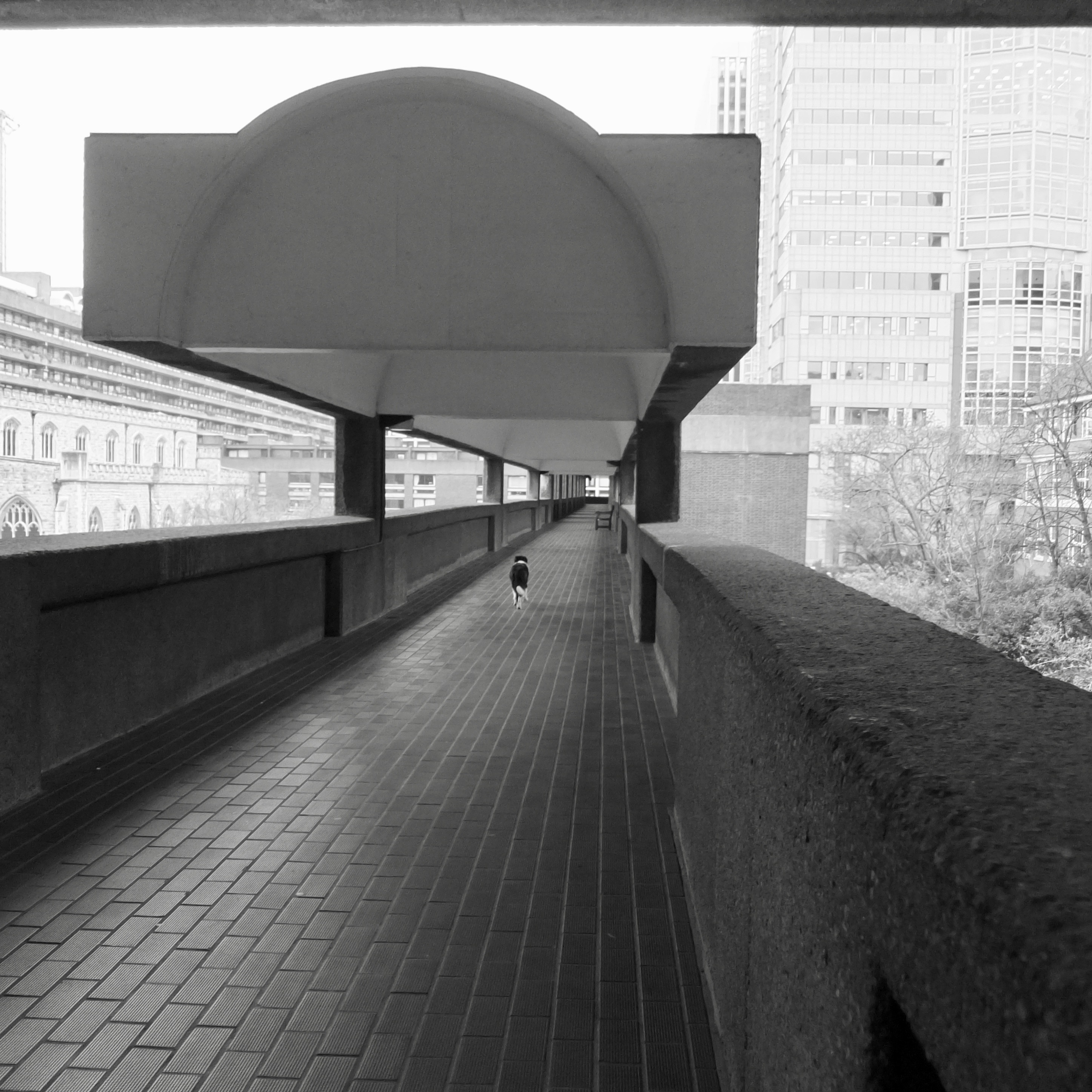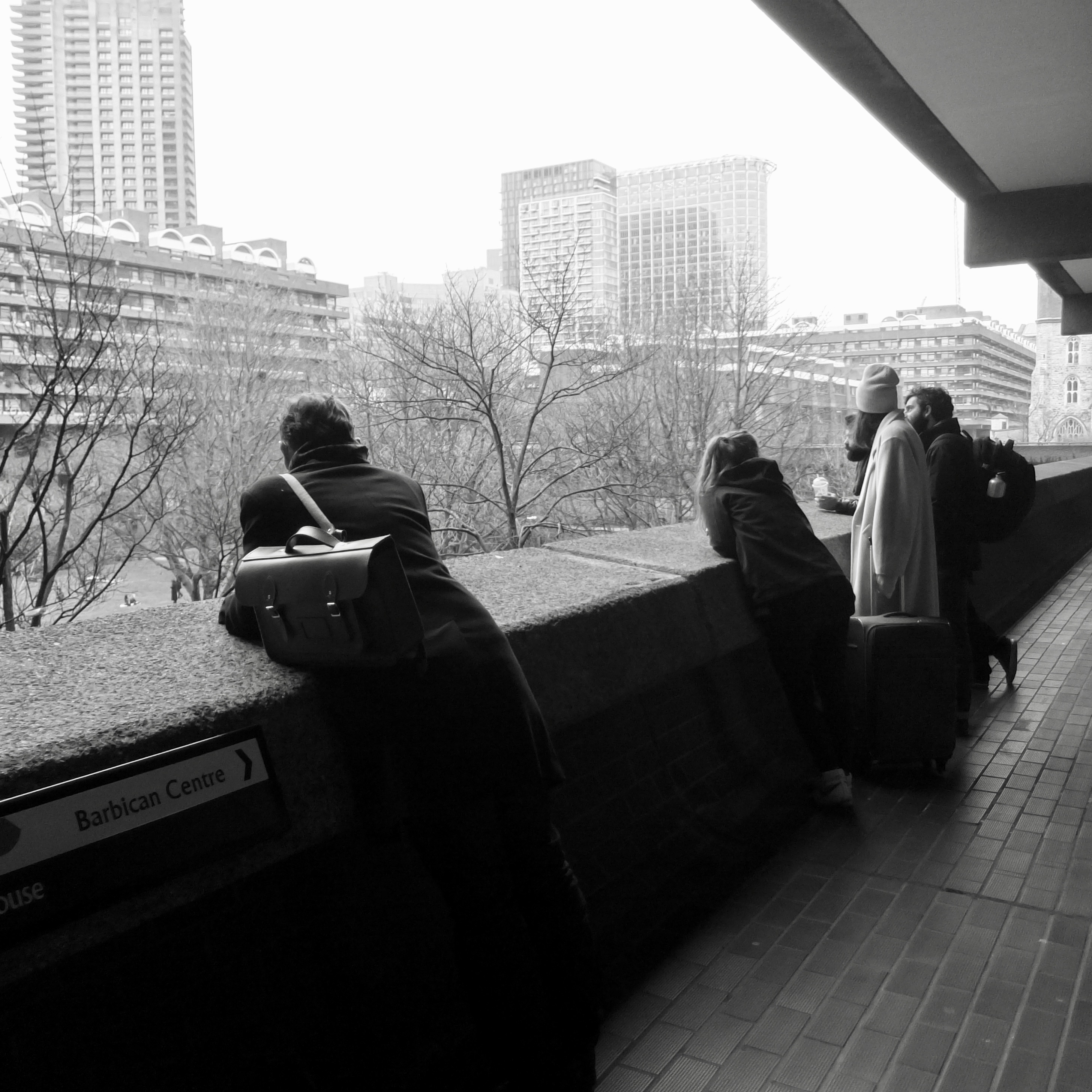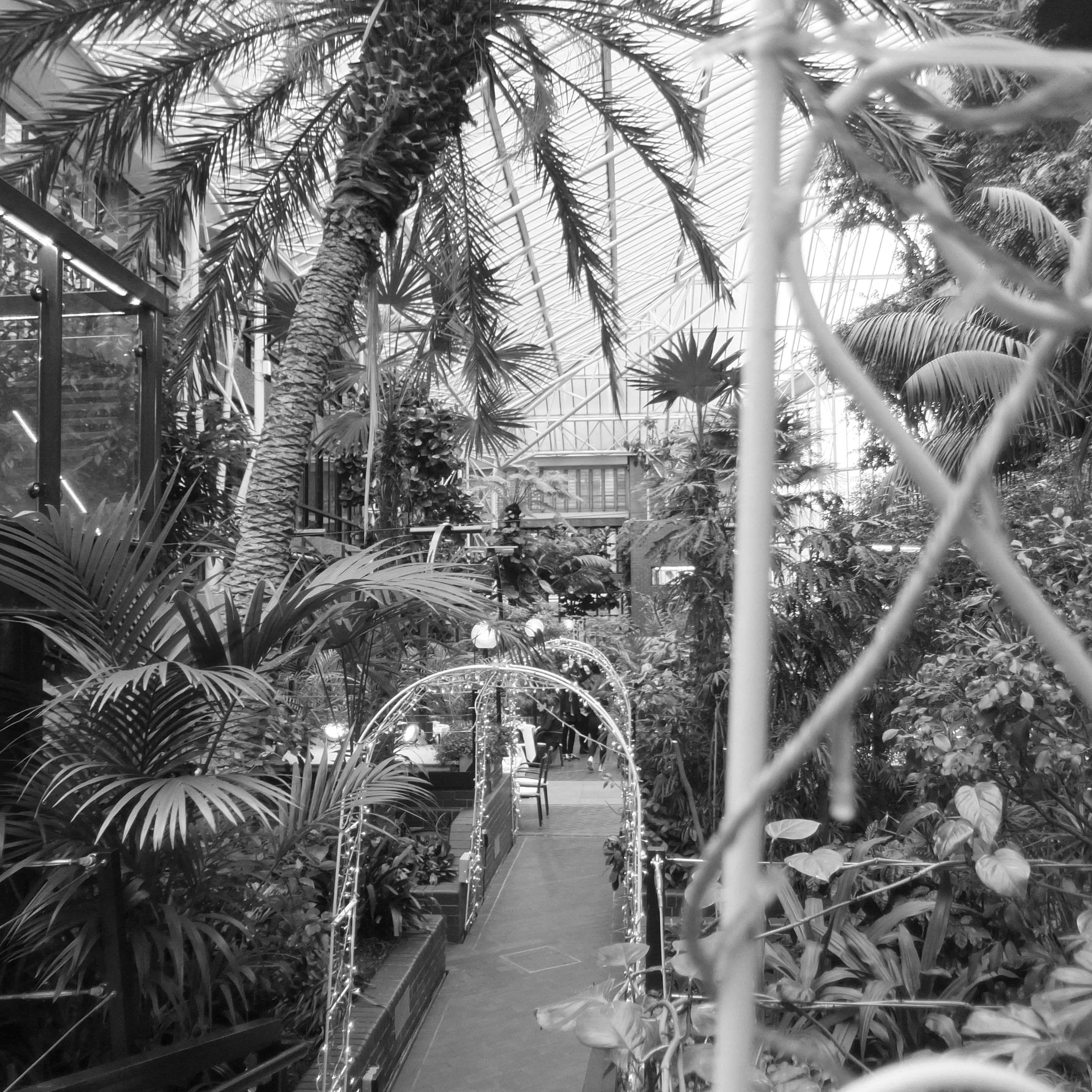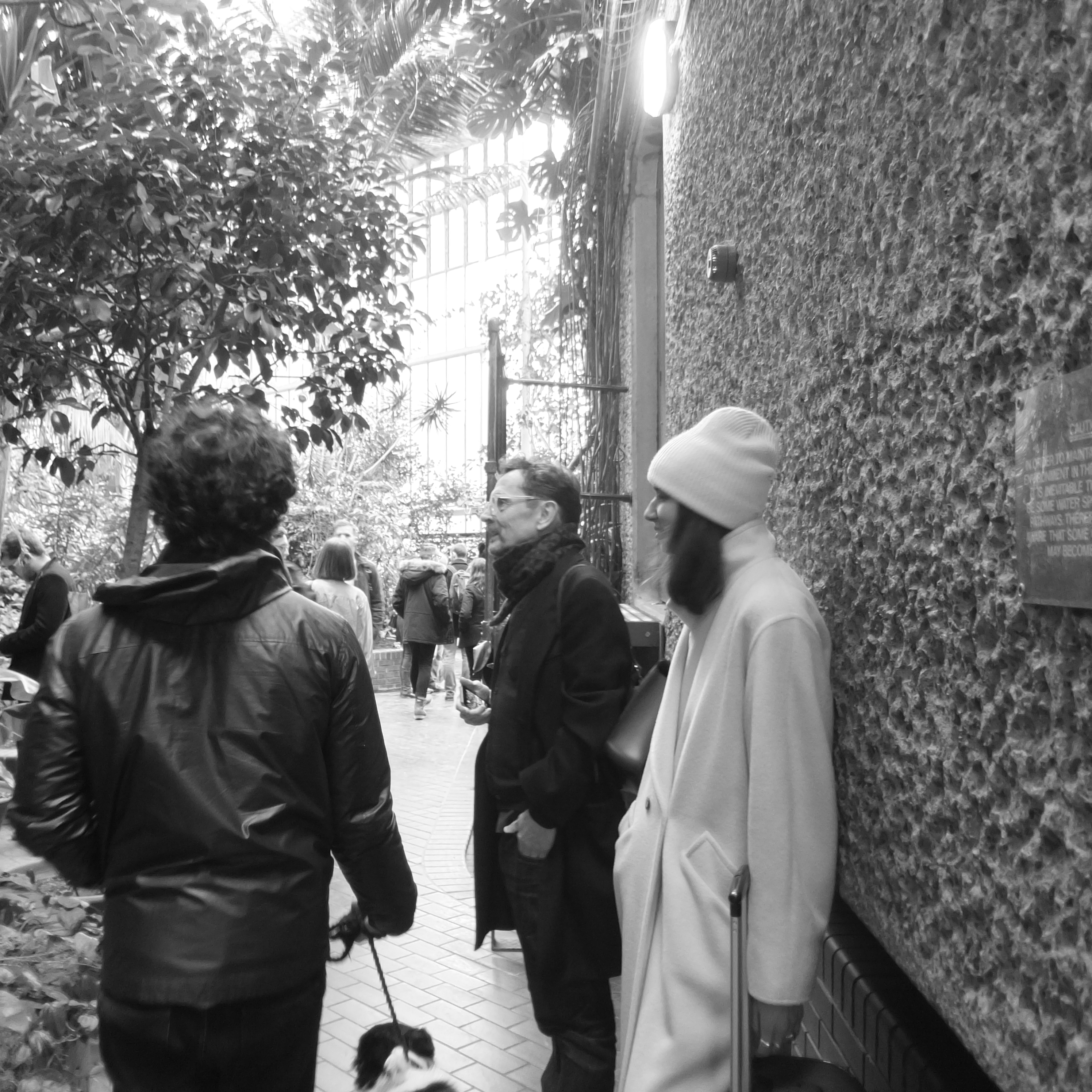
The December 10th walk around the Barbican: No Dogs Allowed was unfortunately affected by the adverse weather conditions and only a small number braved the cold and frequent snow showers. Though the Barbican, in such conditions can exhibit all the vigour of its modernist concrete scheme, especially in its ambitious scale and magnitude, on this very cold and snowy Sunday it seemed particularly soulless and dystopic in character. We therefore decided to cut our losses after a short while and head for the nearest warm cafe.
Fast forward to January and the first Sunday after the beginning of term and the No Dogs Allowed has been rescheduled. There we were, starting our walk from Moorgate station, a small but quite special group of friends, slowly approaching the Barbican from one of its south eastern corners. As we got closer to the massive town-scaled brutalist project, we could see signs of its presence as the concrete organism that makes up the Barbican spread beyond its limits reaching adjunct structures and neighbouring blocks.
There is this strangeness about heading to the Barbican because it is quite difficult to identify its boundaries or to navigate its passageways, stairs and bridges. I imagine this is one of the reasons why the estate often feels too quiet in contrast to its location in the heart of London. The concrete structures and the unrecognisable form of the Barbican perhaps intimidate pedestrians who may prefer to go around it. But this was not our intention because we wanted to navigate the massive structure that covers 20 acres and is made up of 130,000 cubic metres of concrete.
Intimidating, unrecognisable in form, boundary-less and vigorous make up only a few of the many adjectives that could be used to describe this giant urban organism that serendipitously swallowed us into another reality and which belongs to a very specific time in the history of the reconstruction of London where urban space is sensed in a very peculiar way.
In cell biology, phagocytosis is the process by which a free-living organism engulfs other cells or particles and processes them into internal compartments. This is the best way I can find to explain what it is to walk into the Barbican Estate: to be engulfed by this massive concrete organism and to be processed out into its many compartments: from its picturesque staircases and hallways, to magnificent gardens, handcrafted knobs, handlers and archways, the circulation deck, the conservatory, the Barbican Centre and the St Giles Cripplegate Church which miraculously survived devastation caused by the Blitz.
The Barbican can be seen a thousand times and never look the same. Its immensity and the flamboyant complexity of its designs make it one of the finest representations of modern architecture. To be swallowed by the Barbican, I would say, in such great company is one of the best ways to open a door to another dimension of time and space in the heart of the City of London.




-Joao Villas (Words)
-Corrine Noble (Images)